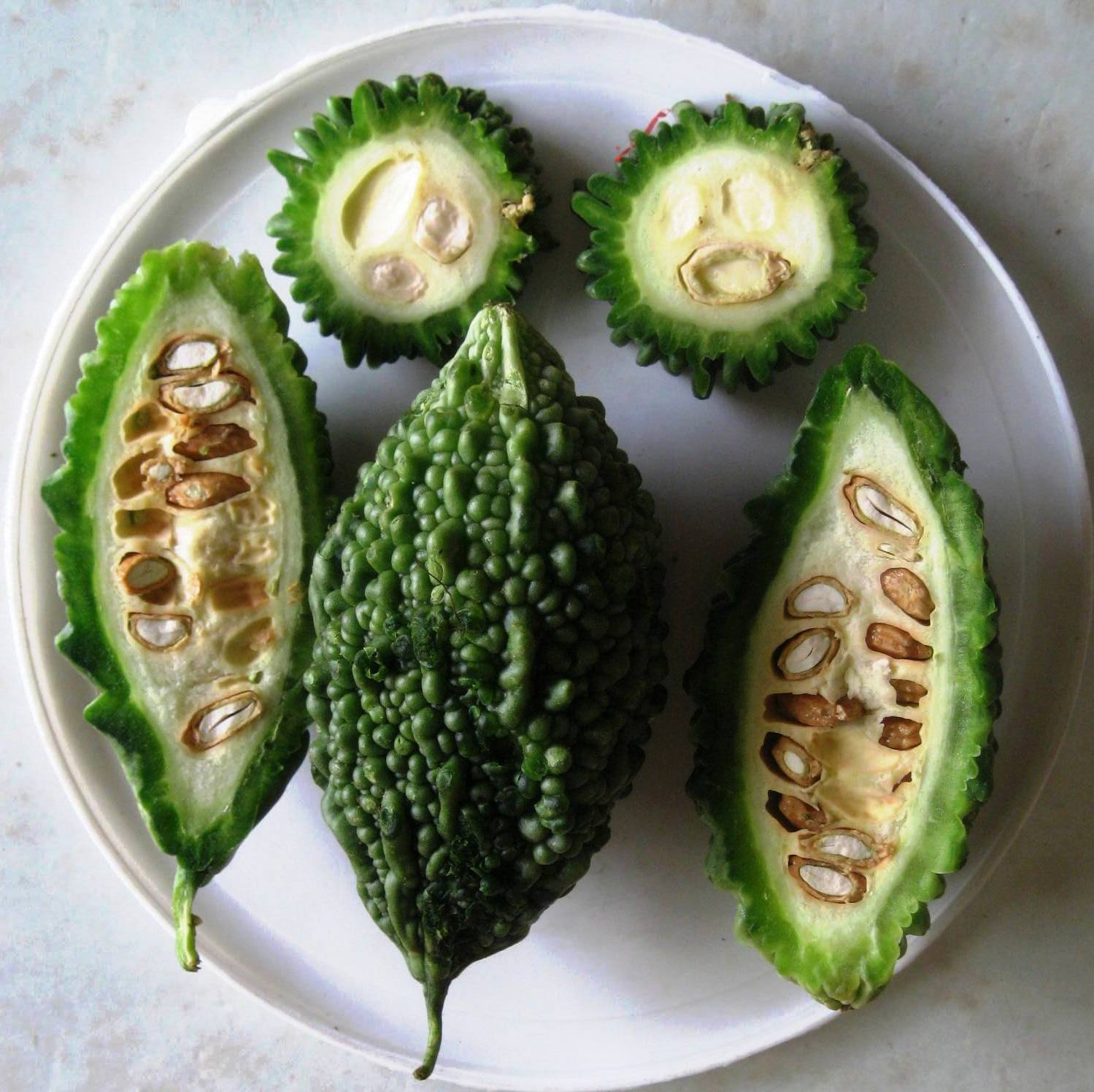Description
The vines of bitter gourd can grow upto 150 to 190 inches in length. Hence, it’s recommended to keep pruning the plant regularly and use a vertical support to save on space. The leaves are prominently lobbed while the skin of the fruit is warty and highly ribbed. Under the skin, the flesh is creamy white and firm. There are five available varieties known as MC 43, Thinneweli white, Mathale green, Neerogi and MG. Can be successfully cultivated up to above 1200m of the sea level.
Planting requirements
Planting season: Year round cultivation can be allowed for suitable areas. Reccomended seasons are April to May and October to November
Planting conditions:
| Propagation | Nursery can be prepared with seeds directly placed in sand trays or beds |
|---|---|
| Planting Method | Plough the soil to 30 cm in depth and build small soil hills filled with compost and surface soil. Plant 3 seeds per hill at 2-3 cm depth for direct seeding. Plants can be transferred from nursery to field directly within 10 days. Keep a spacing of 1.5m x 1m between plants. If more time is required, plants can be transferred to pots for another two weeks |
| Soil | Well-drained with pH 5.5-7.5, rich in compost |
| Water | Good supply of water needed |
| Light | Minimum of 6 to 8 hours of sunlight per day |
Growing conditions:
| Temperatures | Optimal 24-27°C, tolerates up to 35°C |
|---|---|
| Soil | Verticle trellising recommended after three weeks. Trellis should be spaced at 1.5 m x 1 m |
| Water | Consistent moisture, avoid waterlogging. It is suitable to use soil cover to protect soil moisture during dry periods |
| Pruning | Lateral branches at lower parts of the plants can be pruned |
| Weed control | Keep the area around weed free to reduce competition for nutrients |
Harvesting
Start 55-60 days after sowing when fruits are 4-5 inches long and dark green. Harvest every 2-3 days to promote new fruiting. If the fruits are left to ripen on the vine longer than this, they will start changing colour to pale orange and become unpalatable.
Curing
Bitter Gourd does not require a curing process.
Storage
Refrigerate for up to 2 weeks in a plastic bag in the crisper drawer.
Protecting your plants
Pest control
Pest type:
- Fruit Fly
Symptoms:
- The adult fly lays eggs in the flowers. The eggs hatch into maggots, which feed inside the fruits and causes rotting.
Control method:
- prevented by bagging the fruits and using fruit fly traps and pheromone traps
Disease Control
Disease type:
- Powdery mildew (Podosphaera xanthii)
- Downy mildew (Pseudoperonospora cubensis)
- Collar rot/Root rot (Sclerotium spp., Fusarium spp.)
- Gummy Stem Blight (Didymella bryoniae)
- Bacterial wilt (Ralstonia solanacearum)
- Phytoplasma disease of cucurbits
Symptoms:
Powdery mildew: The symptoms begin as pale yellow spots on older leaves, which expand as white, fluffy mycelium spreads across the leaf surface. Severely affected leaves turn brown, shrivel, and may eventually drop from the plant.
Downy mildew: Angular yellow spots appear on the upper leaf surface, confined by the leaf veins. Over time, the leaves become chlorotic, eventually turning necrotic as plant cells die.
Collar rot/Root rot: Initially, the plants exhibit temporary wilting symptoms, with yellowing leaves that lose turgidity and droop. Eventually, the plants die, and the vascular bundles in the collar region turn yellow or brown.
Gummy Stem Blight:
- Lesions: Start by spreading water-soaked areas on leaves and fruit.
- Chlorotic Halo: These lesions may have a chlorotic halo and transition to light brown with irregular outlines.
- Fruit Damage: Dark, cracked, sunken lesions develop on the fruit.
- Plant Collapse: Plants may collapse due to sunken, girdling cankers.
- Stem Symptoms: Spots on stems elongate into streaks, with gummy exudates from cracks.
- Fruiting Bodies: Dark brown to black fruiting bodies (pycnidia) appear on fruit, stems, or leaves.
Bacterial wilt:
- Sudden Drooping: Leaves exhibit sudden drooping.
- Whole Plant Wilting: The entire plant eventually wilts.
- Leaf Changes: Leaves turn brown and dry out.
- Vascular Discoloration: Vascular tissues show brown discoloration.
- Permanent Wilting: The plant experiences permanent wilting.
Phytoplasma disease of cucurbits:
- Smaller, thickened, and yellowish-green leaves
- Shortened internodes and stunted growth of plants
- Witch's broom symptoms
- Greening of flowers
Management:
Powdery mildew: Destroy infected plant debris after harvest.
Downy mildew: Destroy infected plant debris after harvest.
Collar rot/Root rot: Destory infected plants. Improve drainage.
Gummy Stem Blight: Crop debris should be plowed deeply immediately after harvest to reduce fungus survival
Bacterial wilt:
- Destroy infected plants along with the soil.
- Implement crop rotation using non-susceptible crops (e.g., okra, maize).
- Practice mixed cropping with cruciferous crops.
- Avoid moving equipment from infected fields to non-infected fields.
Phytoplasma disease of cucurbits: Remove infected plants, control disease vectors (leaf hoppers)
Sources
In addition to our General List of Sources (link), we used these specific references:
